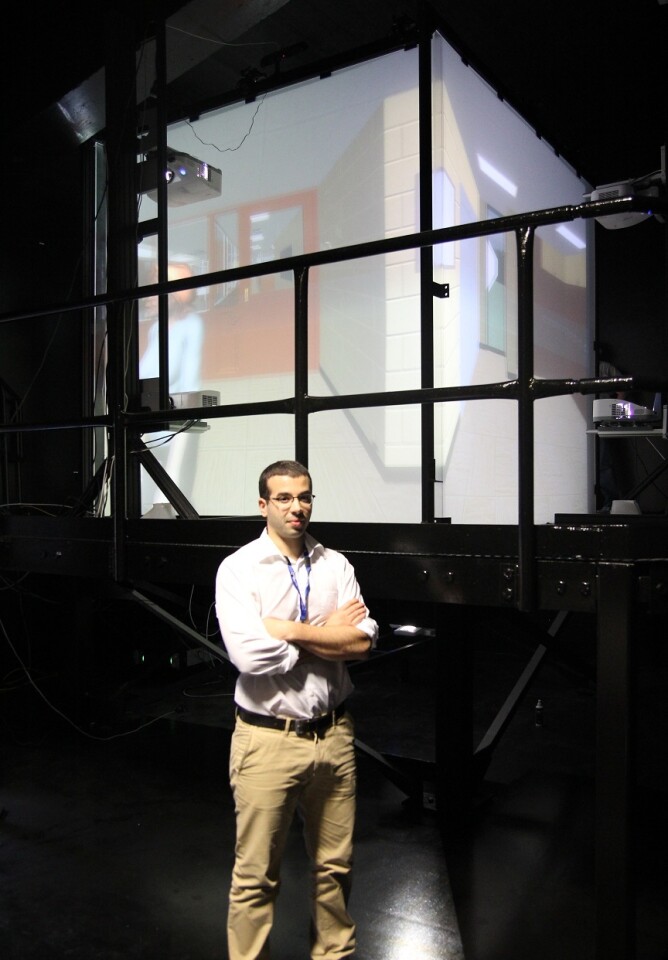People who have been charged with sexual offenses typically have to undergo psychotherapy in order to control their deviant impulses. According to researchers at the University of Montreal, virtual reality may provide the best method of determining if that therapy has indeed worked – before those offenders are released back into the public.
Currently, the most common testing technique (for men) is what's known as penile plethysmography. This involves placing a ring-style sensor around the offender's penis, then measuring any changes in its circumference as they're subjected to a variety of visual or auditory stimuli. One problem with this approach is that subjects can skew the results by diverting their eyes from the images.
In the U Montreal research, however, the stimuli used in penile plethysmography consists of computer-generated images of people, that are shown on multiple screens within a cube-shaped VR "vault." This is much more immersive for the subject than simply looking at a single screen.
More importantly, eye-tracking hardware is used to monitor the direction of the subject's gaze as the images are being presented. This lets administrators know if they're not looking at the images, or if they're spending too much time looking at the on-screen peoples' erogenous zones.
The stumili can be made more realistic by placing the people in settings such as bars or homes, plus factors such as their age, gender or race can be altered in order to fit the compulsions of the individual being tested.

In its present form, the VR tech has yielded results similar to those obtained using other methods, for identifying deviant responses in sex offenders. Once developed further, however, it could end up being even better.
"Virtual reality may become a frequently-used clinical tool in forensic psychiatry within the next few years, both for judging how dangerous individuals are and for determining their ability to control themselves under various situations tested in virtual reality, thus allowing us to measure the effectiveness of therapies," said PhD student Massil Benbouriche, who is leading the research.
Source: University of Montreal





